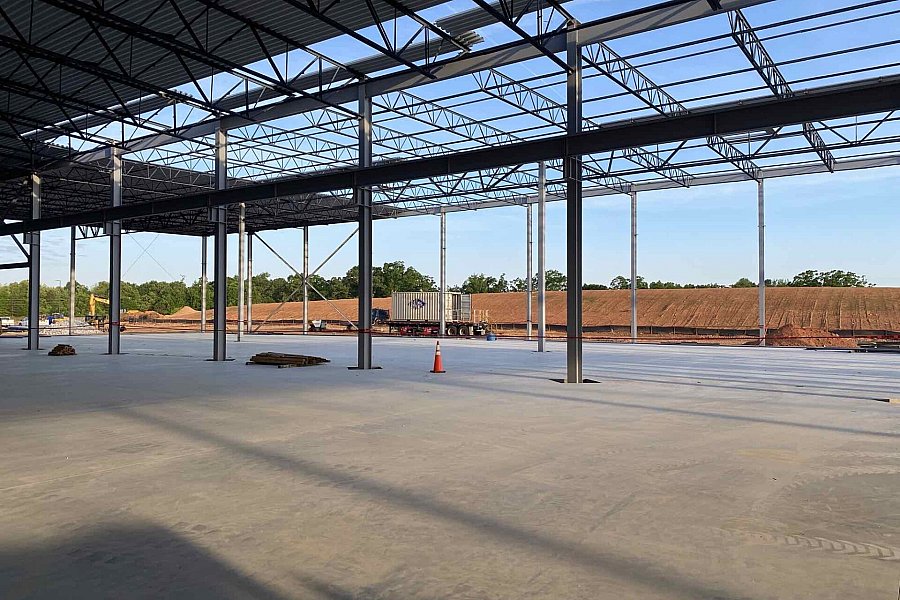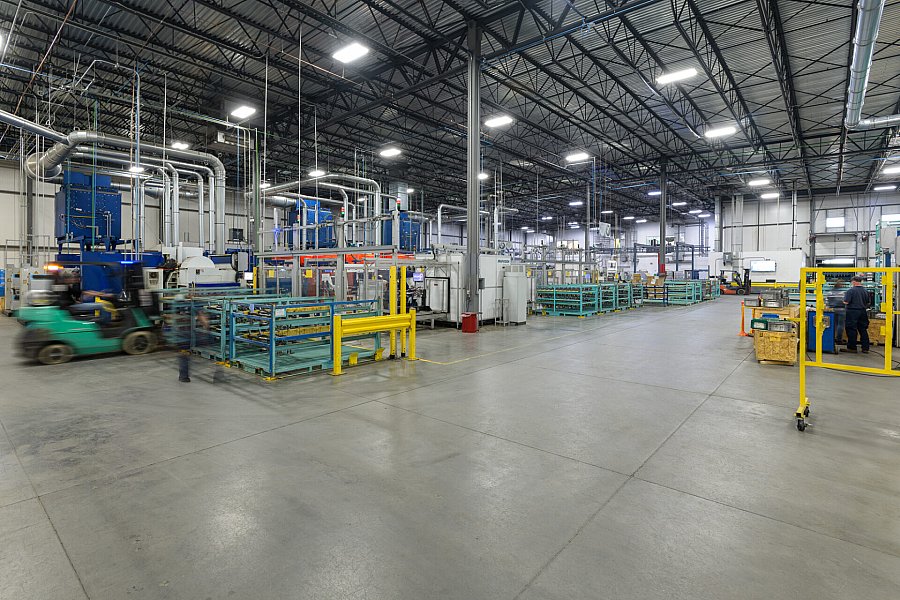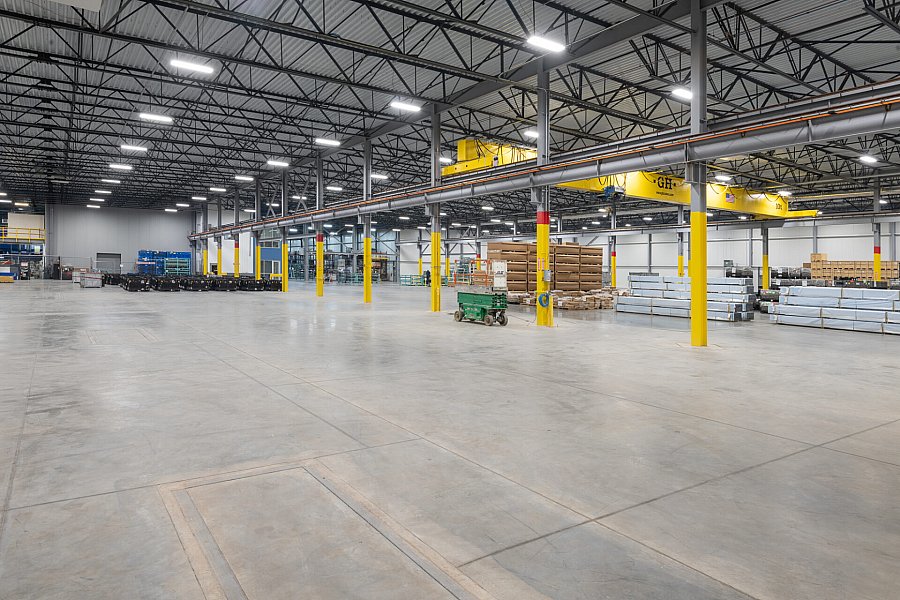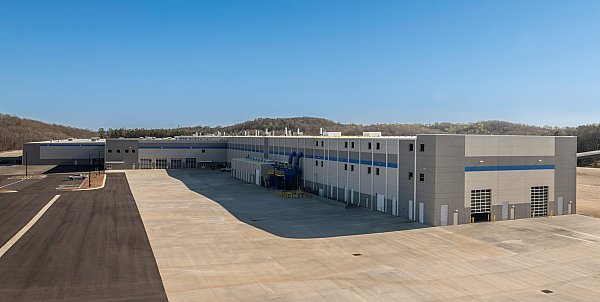



Soil Remediation, Stabilization
Throughout the process, the project team took a level-headed, strategic, creative approach to problem solving. Before the project even began, wet soil remediation and stabilization had to be completed in areas where the expansion would be sited, and roads and parking had been added earlier. The soil condition was exacerbated by time of year and weather. Choate’s solution was to utilize soil cement to keep the project on schedule. The team was able to leverage existing experience and that of the trade partners to help develop a plan for its use.
The plant had to remain fully operational during the expansion and production realignment. To achieve this, Choate created a complex series of digital equipment scanning as well as modeling of both existing and new production components. This strategy allowed the project team to reevaluate production flow prior to construction and plan for future efficiencies in the manufacturing layout without impacting operations.


Strategic Installation of International Equipment
A proprietary piece of stamping equipment, specially made in Europe, was the impetus for the expansion. The machine’s shipping, arrival, and installation were crucial to the project’s successful completion. Its installation required several equipment pits to be dug, some as deep as 10 feet. Design modifications, made while the machine was crossing the Atlantic, required additional pit construction. It arrived in Lavonia in seven shipping containers, one weighing 38,000 pounds.
Because of the stamping machine’s centrality to the project, the entire space was dried-in prior to its arrival. This meant the installation of an interior overhead crane, whose delivery would be post dry-in, needed an unorthodox installation method. Working with our crane supplier, we determined the best method would be to remove small panels in the roof to allow mobile cranes from the outside to access and lift the massive gantry system onto the interior crane rails. This method of safe crane installation kept the project on schedule with the added bonus of allowing for future maintenance access through the roof curbs.

Planning to Precision
To minimize downtime and ensure accuracy in equipment reinstallation, Choate’s VDC team laser scanned, measured, and generated as-builts for existing elements which were to be moved. In addition, the team had to guarantee the accuracy, squareness, and straightness in the crane rail beams within a 1/8-inch tolerance across the entire 320 feet of travel. The team again relied on the laser to scan, measure and as-built the beams and rails to ensure precision.
The complexity and dynamics of this project were particularly challenging. For Choate, the team looked at these challenges as opportunities, rather than obstacles. Choate’s collaborative approach involves not only clients, but suppliers, vendors, and partners. Much like Linde + Wiemann, Choate continually seeks to innovate our processes with creative solutions and strategies that highlight the thorough and quality work its employee-owners accomplish every day.
We want to hear from you! Whether you have questions about this project, want to reach a particular team member or office, or want to learn more about our services, please let us know how we can serve you.
Project Contact
Cottrell Trailers Manufacturing Plant
BUILDING A BRIDGE TO THE FUTURE OF MANUFACTURING










